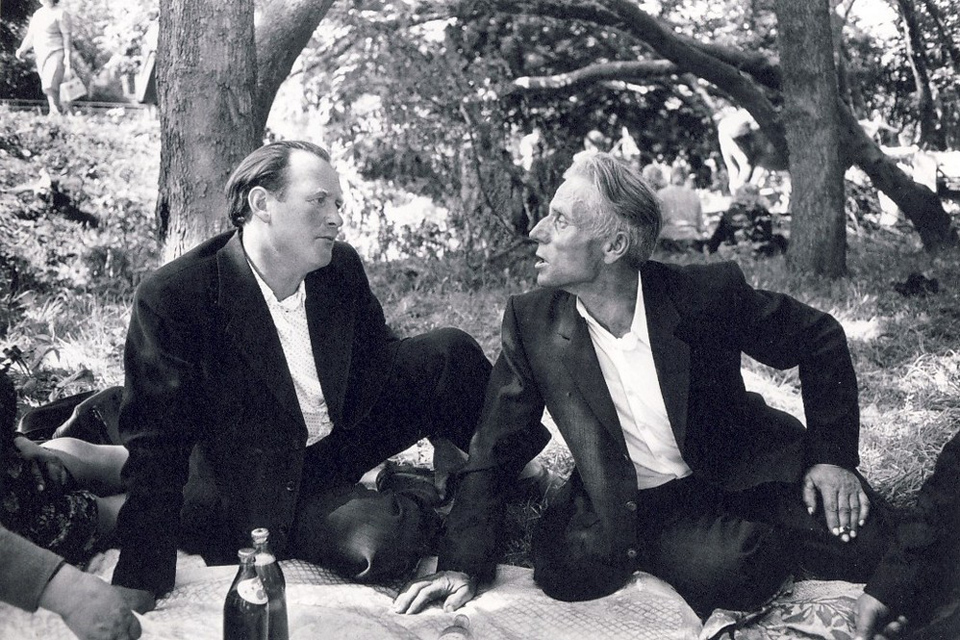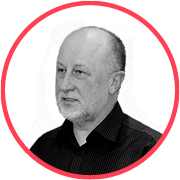
Romualdas Pozerskis: “I have always been free”
On the 13th of August, exhibition “Large shape. Documentary Prose of Romualdas Pozerskis” opened up at the Brothers Lumiere Centre of Photography in Moscow. Bird In Flight interviewed the scholar of Lithuanian photography about the former life of photoartists under the Soviet regime.

The ’60-’80s were the thawing period. You could feel the breath of democracy. In Soviet Union Lithuanian photographers worked in good conditions.
In 1963 a group of photographers founded a photo club in Kaunas. The cream of the crop Lithuanian experts became its members. They experimented with assemblage and form, and it turned out interesting. In late ’60s scholar of Soviet photography Antanas Sutkus brought together some fascinating people: he made a pact with certain influential cultural figures, and as a result in 1969 the Union of Photoartists of Lithuanian Soviet Socialistic Republic was formed. The Russian photo union, Latvian, Estonian and others, appeared only in 1989, so that made our organization unique in the USSR over the course of twenty years. Our union had staff of 200. We had a gallery and a library of over hundred thousand authentic photographs. Five year after it had been founded new regional departments started popping up all over the country. Lithuania united its forces in search for upcoming talents.
{
“img”: “/wp-content/uploads/2014/08/pozherski_01.jpg”,
“alt”: “Romualdas Pozerskis”
},
{
“img”: “/wp-content/uploads/2014/08/pozherski_02.jpg”,
“alt”: “Romualdas Pozerskis”
},
{
“img”: “/wp-content/uploads/2014/08/pozherskic_03.jpg”,
“alt”: “Romualdas Pozerskis”
},
{
“img”: “/wp-content/uploads/2014/08/pozherski_04.jpg”,
“alt”: “Romualdas Pozerskis”
},
{
“img”: “/wp-content/uploads/2014/08/pozherski_05.jpg”,
“alt”: “Romualdas Pozerskis”
},
{
“img”: “/wp-content/uploads/2014/08/pozherski_06.jpg”,
“alt”: “Romualdas Pozerskis”
},
{
“img”: “/wp-content/uploads/2014/08/pozherski_07.jpg”,
“alt”: “Romualdas Pozerskis”
},
{
“img”: “/wp-content/uploads/2014/08/pozherski_08.jpg”,
“alt”: “Romualdas Pozerskis”
},
{
“img”: “/wp-content/uploads/2014/08/pozherski_09.jpg”,
“alt”: “Romualdas Pozerskis”
},
{
“img”: “/wp-content/uploads/2014/08/pozherski_10.jpg”,
“alt”: “Romualdas Pozerskis”
},
{
“img”: “/wp-content/uploads/2014/08/pozherski_11.jpg”,
“alt”: “Romualdas Pozerskis”
}
I entered the Union in 1974, together with friend of mine Virgilijus Shonta. Aleksandras Macijauskas was our mentor at the time. We used to visit photographer Gunars Binde in Latvia, and Wilgelm Mikhailovsky, – so we gained a lot of experience. But it was Macijauskas with his incredible reputation, along with Sutkus and Romualdas Rakauskas, who steered us into the right direction. We started participating in the international exhibitions the same year, 1974. Next year I moved up to the top ten photographers in the country. My work was showcased in Italy, Argentina, Mexico. I and Shonta got lucky to had made it into a great team.
Our works sold well, too. We paid for retouching, but the Union took care of the photo paper, film, equipment, studio, and the apartment. If you did a great job you could have a nice life.
Censoring was the difficult part. Ideology was our enemy. And we tried to fight it. With our works. We didn’t dwell on the fact that our pieces wouldn’t be featured in the newspapers and magazines. We didn’t care that the only magazine of photography at the time, “Soviet Photo”, wouldn’t publish us. We got to participate in numerous exhibitions abroad instead.
Needless to say, I did run into some political issues. In 1974 I was shooting a youth demonstration in Kaunas. As a result I got arrested and expelled from college. But I was quickly let go and managed to get reinstated.
We couldn’t shoot anything that had to do with military, the handicapped, or assisted living facilities. The subject of religion was out of reach as well.
{
“img”: “/wp-content/uploads/2014/08/pozherskis_23.jpg”,
“alt”: “Romualdas Pozerskis”
}
Sutkus made it so KGB woudn’t touch me. I began shooting Catholic holidays in 1974 and kept on doing it for almost 20 years. I titled the collection “The country holidays”, but couldn’t show it to anyone till 1988. I simply took pictures and stored them in a file.
Overall, speaking of censoring, I consider self-censoring the most frightening. Self-censoring was lighter in pieces by Sutkus and Macijauskas. We knew that there were things we shouldn’t photograph. Don’t pull a lion by whiskers. Still, we shot a lot of stuff that was forbidden to show. Many photographers practiced very high level of self-censoring. When they saw a drunk or an accident they simply didn’t pull out their cameras. Because it was not allowed. If it wasn’t going to make the cut, why bother to photograph it.
However, in 1990 there was an exhibition of uncensored photos. It turned out that there weren’t too many of such photos. Still, my complete series on religion was displayed. And I was honored with the National Art Award for it. Not only because I shot things forbidden by censoring, but also because the pictures were indeed good.
I had my own photographic pace: I shot all summer, stored the used film in the refrigerator, then processed and printed images during winter. And again, waited for the next summer. It was very agricultural in a way – I waited to harvest the fruits of my labor. I was very involved into the harvesting process. Because while shooting you always think and hope to have good results. But after the processing you find out that it wasn’t as good as you expected, and after the finals prints you see that it was even less so. And in the end you realize that you only have very few good pictures.
{
“img”: “/wp-content/uploads/2014/08/pozherskis-01.jpg”,
“alt”: “Romualdas Pozerskis”
},
{
“img”: “/wp-content/uploads/2014/08/pozherskis-02.jpg”,
“alt”: “Romualdas Pozerskis”
},
{
“img”: “/wp-content/uploads/2014/08/pozherskis-03.jpg”,
“alt”: “Romualdas Pozerskis”
},
{
“img”: “/wp-content/uploads/2014/08/pozherskis-04.jpg”,
“alt”: “Romualdas Pozerskis”
},
{
“img”: “/wp-content/uploads/2014/08/pozherskis-05.jpg”,
“alt”: “Romualdas Pozerskis”
},
{
“img”: “/wp-content/uploads/2014/08/pozherskis-06.jpg”,
“alt”: “Romualdas Pozerskis”
},
{
“img”: “/wp-content/uploads/2014/08/pozherskis-07.jpg”,
“alt”: “Romualdas Pozerskis”
},
{
“img”: “/wp-content/uploads/2014/08/pozherskis-08.jpg”,
“alt”: “Romualdas Pozerskis”
},
{
“img”: “/wp-content/uploads/2014/08/pozherskis-09.jpg”,
“alt”: “Romualdas Pozerskis”
},
{
“img”: “/wp-content/uploads/2014/08/pozherskis-10.jpg”,
“alt”: “Romualdas Pozerskis”
},
{
“img”: “/wp-content/uploads/2014/08/pozherskis-11.jpg”,
“alt”: “Romualdas Pozerskis”
},
{
“img”: “/wp-content/uploads/2014/08/pozherskis-12.jpg”,
“alt”: “Romualdas Pozerskis”
},
{
“img”: “/wp-content/uploads/2014/08/pozherskis-13.jpg”,
“alt”: “Romualdas Pozerskis”
}
During Soviet times the Republic of Lithuania had hardly any street photography. 95 per cent was village photography, similar to Rakauskas’s “Blooming” and Macijauskas’s “Market”. There were very few city pictures. I think that my collection “Old towns of Lithuania” was the only series of street photography at the time. Nowadays we have a lot more authors who do that. It became trendy.
In general, photography has gone through some major changes. Probably because life itself changed. Now we’ve gone digital instead of film. It’s a completely different approach. Today there are social series about people with their problems. But those are photo stories. It takes no longer than a week or two to put together. And we – we used to compose novels. It took ten years for Rakauskas to create “Blooming”, and twenty year for Macijauskas to finish “Market”.
In 2010 I was shooting “Old towns of Lithuania” all year, and ran into numerous obstacles. In the past, towns were abundant with children, cats, dogs. Today there are only Chinese eateries, and cats and dogs are gone. Can’t shoot children – unless the parents give you permission, otherwise you end up dealing with police. Houses are now private properties with no trespassing allowed. The only things you’re left with to shoot are streets and crossings.
This year I have to publish album “Road to Freedom”. It’s about Lithuania in 1988-1993. I began with the images of the protests when for the very first time the flag of Lithuania was raised. Then I took morgue photos of those who got killed during the overtaking of the television tower in Vilnius. I took pictures of people entering “Baltic Way” formation. I wrap up the album with the photographs of the Lithuanian and Russian soldiers saying good-bye. It will be a collection of memories of many.
I shot 18,000 frames for this album over the course of five years, from 1988 till 1993. By now I scanned and digitized thirteen hundred of those. Some images are featured in the Lithuanian history handbooks.
{
“img”: “/wp-content/uploads/2014/08/pozherskis-14.jpg”,
“alt”: “Romualdas Pozerskis”
}
I was once offered to become a personal photographer to Landsbergis (editor’s note: Head of State for the Republic of Lithuania in 1990-1992), but I have always stayed away from obligations and hopefully always will. I never collaborated with any magazines and never associated myself with any political affiliation. I have always been free.
New and best




